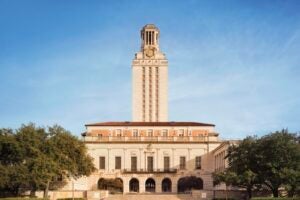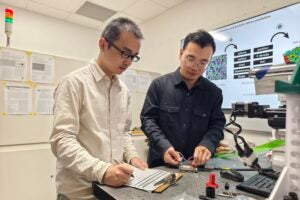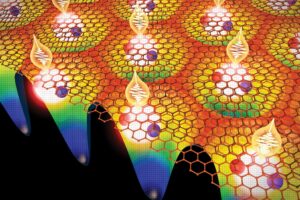The archive of film director Nicholas Ray (19111979), best known for his film, “Rebel Without a Cause,” has been acquired by the Harry Ransom Center, a humanities research library and museum at The University of Texas at Austin.
Spanning more than 35 years, materials in the collection include, but are not limited to, Ray’s work on “They Live By Night” (1949), “In A Lonely Place” (1950), “Flying Leathernecks” (1951), “Rebel Without a Cause” (1955), “Run for Cover” (1955), “Bitter Victory” (1957) and “55 Days at Peking” (1963). “Rebel Without a Cause” starred James Dean, Sal Mineo and Natalie Wood.
The holdings include original treatments, annotated scripts, photographs, journals, notes, audio reels, video recordings and film that provide an account of Ray’s working methods and ideas.
Also included are materials from Ray’s teaching career, which he began in 1971. Ray taught film directing and acting at Harpur College of Arts and Sciences at Binghamton University, New York University and the Lee Strasberg Institute.
Storyboards from “Rebel Without a Cause” reveal a different ending from the film that was released. In the alternate ending as originally planned, Plato, played by Mineo, is shot from the dome of the planetarium. The archive’s 64 storyboards contain Ray’s handwritten dialogue and directions. Almost all of Ray’s dialogue changes were incorporated into the film.
Ray’s most ambitious personal project was the experimental film “We Can’t Go Home Again” (19731976), which he made with students at Harpur. A version of the film screened at the Cannes Film Festival in 1973, but Ray continued working and editing the film until his death. Materials relating to the autobiographical project include hours of edited work print, rushes, cut negative, editing notes and journal entries.
Ray’s wife, Susan, is planning to release a restoration of the film based on Ray’s notes at this year’s Venice International Film Festival in honor of the centennial of Ray’s birth. EYE Film Institute Netherlands and the Academy of Motion Picture Arts and Sciences Film Archive assisted with the restoration, which repaired deterioration to sound and picture and clarified the soundtrack by returning to original recordings and augmenting it with Ray’s narration.
Ray was admired by the French New Wave, with director Jean-Luc Godard declaring “cinema is Nicholas Ray” in his review of Ray’s film “Bitter Victory.”
Ray’s early mentors included Frank Lloyd Wright, Elia Kazan and John Houseman. During his career Ray worked with actors Humphrey Bogart, Richard Burton, Joan Crawford, Dean, Dennis Hopper, James Mason, Robert Mitchum, John Wayne and Wood.
The archive also includes Ray’s work on uncompleted projects, including a film about the Chicago Seven trial, a collaboration with James Jones for the treatment “Under Western Eyes” (1963), a script written in collaboration with Norman Mailer titled “City Blues” (1976) and a script in progress called “New York After Midnight” or “One Dollar Bill, Baby,” written in Ray’s hand. Ray’s work with German director Wim Wenders on “The American Friend” (1977) and “Lightning Over Water” (1980) is well represented.
“Every frame of a Nicholas Ray film is expressive of the whole,” said Steve Wilson, curator of film at the Ransom Center. “From his inspired compositions to the subtlety of meaning and emotional richness he elicits from his writers, designers and actors, Ray created a body of work that has had a profound influence on generations of filmmakers who came after. The Ransom Center is proud to become the custodian of Ray’s papers and we are particularly pleased to have Ray’s teaching materials, which are, outside of his films, the richest and most abundant expression of his life and ideas to be found anywhere.”
The Ray archive enhances the film collection at the Ransom Center, joining the archives of Robert De Niro, Ernest Lehman, Paul Schrader, David O. Selznick and Gloria Swanson, and it adds significantly to the center’s holdings in filmmaking of the 20th century.
Storyboards from “Rebel Without a Cause” will be displayed on the first floor of the center from July 28 through Aug. 31.
Once processed, cataloged and housed, the collection will be available for research in the fall.
High-resolution press images from the Ray archive are available.




